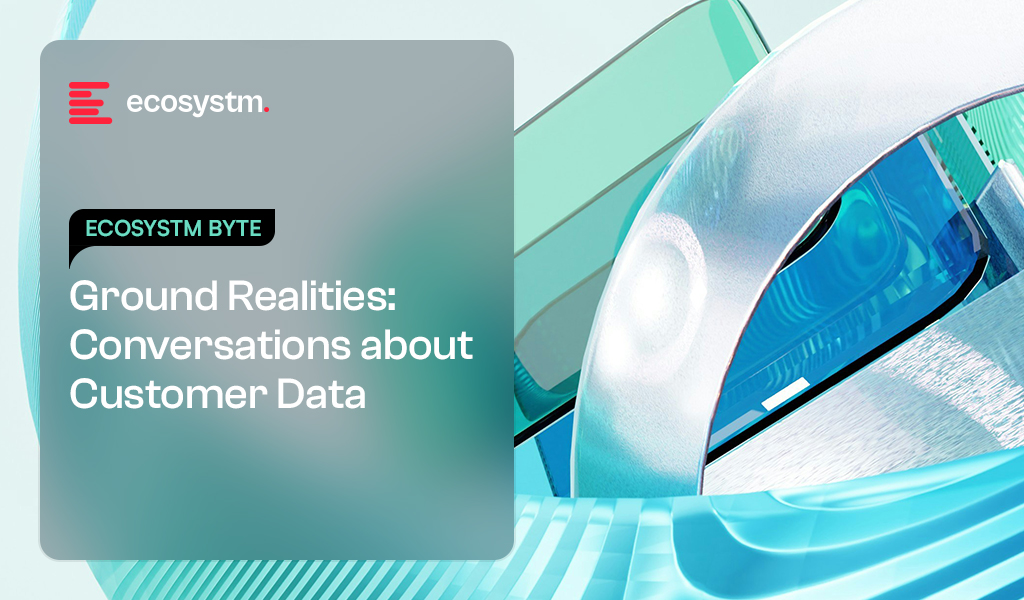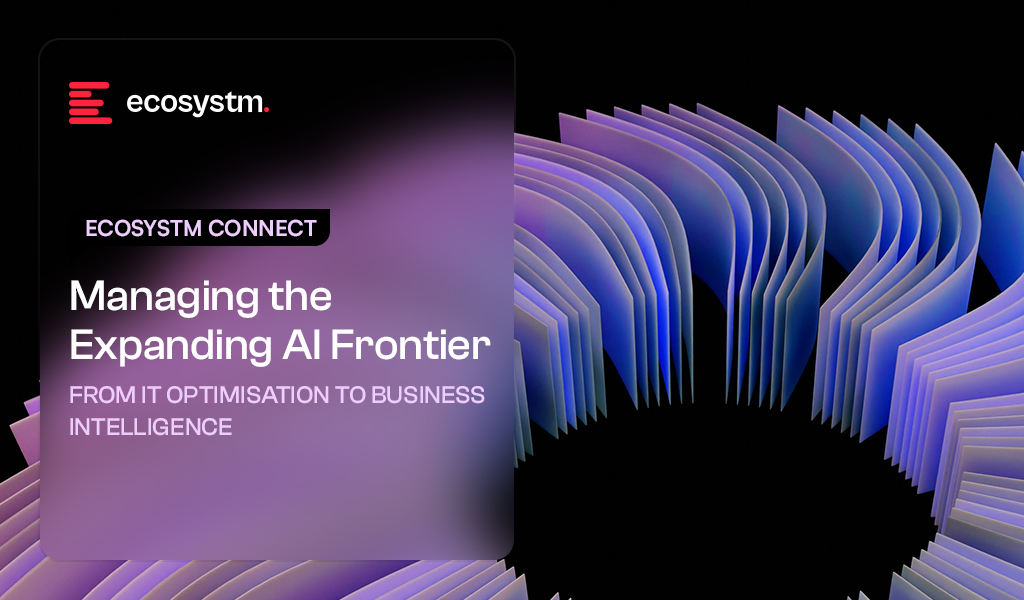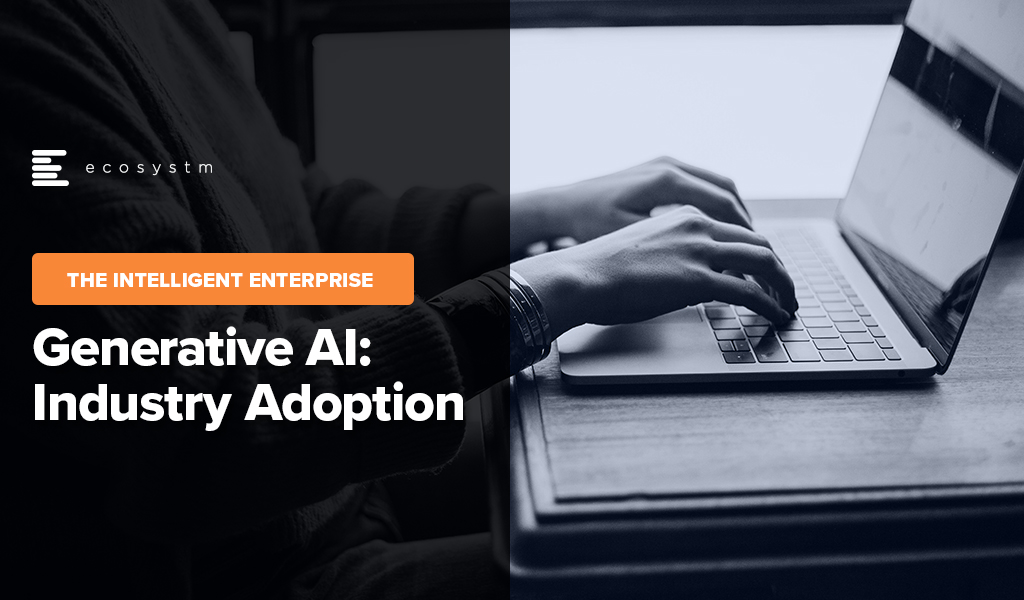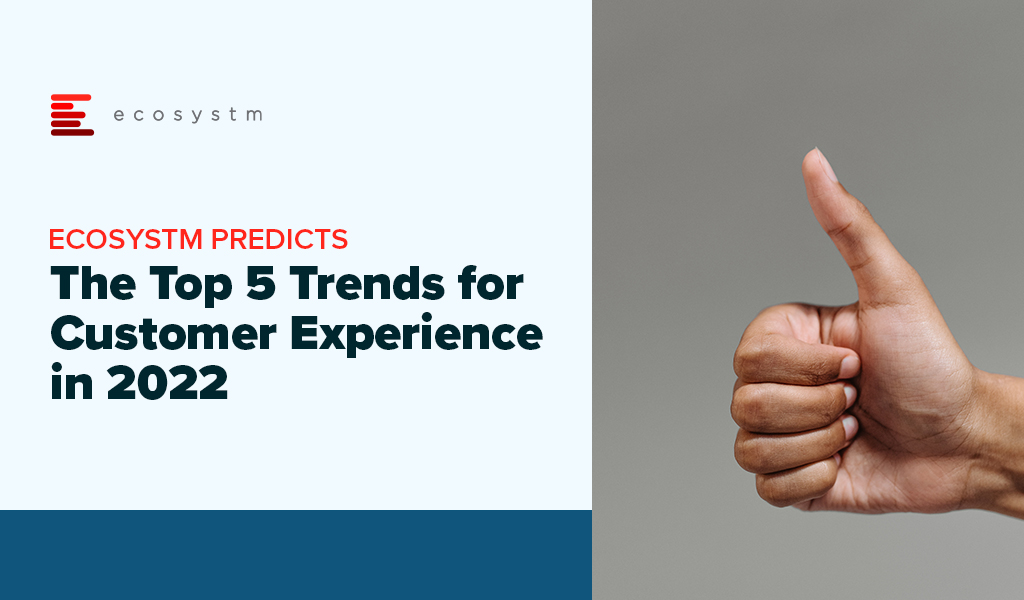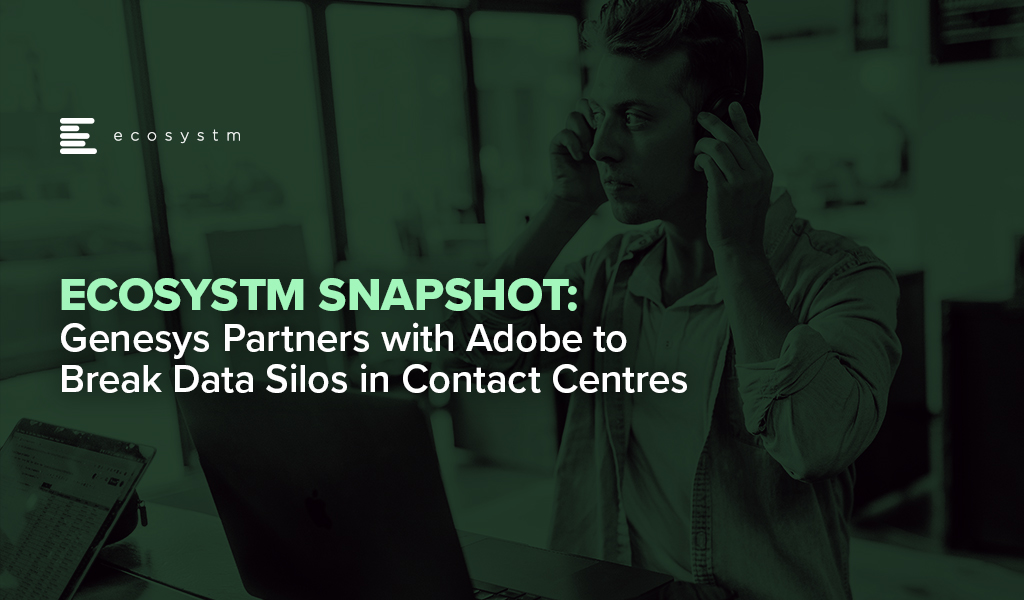Across our conversations with marketing leads, sales heads, customer experience owners, and tech architects, one theme keeps coming up: It’s not about collecting more data. It’s about making sense of what we already have.
As customer journeys grow more fragmented, leaders are grappling with a big question: how do we unify data in a way that helps teams act fast, personally, and responsibly?
This is where CRM and CDP integration becomes critical. Not a technical afterthought, but a strategic decision.
Click here to download “Ground Realities: Conversations about Customer Data” as a PDF.
Why CRM and CDP Must Work Together
CRMs are relationship systems, built to track sales conversations, account history, support interactions, and contact details. CDPs are behaviour systems designed to unify signals from web, mobile, ads, apps, and third-party tools.
They each solve different problems, but the same customer is at the centre.
Without integration, CRMs miss the behavioural context needed for real-time decisions, while CDPs lack structured data about customer relationships like deal history or support issues. Each system works in isolation, limiting the quality of insights and slowing down effective action.
“Marketing runs on signals: clicks, visits, scrolls, app drops. If that data doesn’t talk to our CRM, our campaigns feel completely disconnected.” – VP, Growth Marketing
When CRM and CDP are Integrated
Sales gains visibility into customer behaviour, not just who clicked a proposal, but how often they return, what products they browse, and when interest peaks. This helps reps prioritise high-intent leads and time their outreach perfectly.
Marketing stops shooting in the dark. Integrated data enables them to segment audiences precisely, trigger campaigns in real time, and ensure compliance with consent and privacy settings.
Customer Experience teams can connect the dots across touchpoints. If a high-value customer reduces app usage, flags an issue in chat, and has an upcoming renewal, the team can step in proactively.
IT and Analytics benefit from a single source of truth. Fewer silos mean reduced data duplication, easier governance, and more reliable AI models. Clean, contextual data reduces alert fatigue and increases trust across teams.
Why It Matters Now
Fragmented Journeys Are the Norm. Customers interact across websites, mobile apps, social DMs, emails, chatbots, and in-store visits – often within the same day. No single platform captures this complexity unless CRM and CDP data are aligned.
Real-Time Expectations Are Rising. A customer abandons a cart or posts a complaint – and expects a relevant response within minutes, not days. Teams need integrated systems to recognise these moments and act instantly, not wait for weekly dashboards or manual pulls.
Privacy & Compliance Can’t Be Retrofitted. With stricter regulations (like India’s DPDP Act, GDPR, and industry-specific norms), disconnected systems mean scattered consent records, inconsistent data handling, and increased risk of non-compliance or customer mistrust.
“It’s not about choosing CRM or CDP. It’s about making sure they work together so our AI tools don’t go rogue.” – CTO, Retail Platform
The AI Layer Makes This Urgent
Agentic AI is no longer a concept on the horizon. It’s already reshaping how teams engage customers, automate responses, and make decisions on the fly. But it’s only as good as the data it draws from.
For example, when an AI assistant is trained to spot churn risk or recommend offers, it needs both:
- CDP inputs. Mobile session drop-offs, email unsubscribes, product page bounces, app crashes
- CRM insights. Contract renewal dates, support history, pricing objections, NPS scores
Without the full picture, it either overlooks critical risks, or worse, responds in ways that feel tone-deaf or irrelevant.
A Smarter Stack for Customer-Centric Growth
The CRM vs CDP debate is outdated – both are essential parts of a unified data strategy. Integration goes beyond syncing contacts; it requires real-time data flow, clear governance, and aligned teams. As AI-driven growth accelerates, this integrated data backbone is no longer just a technical task but a leadership imperative. Companies that master it won’t just automate, they’ll truly understand their customers, gaining a decisive competitive edge.

AI adoption is no longer a question of if, but how fast and how well. Most organisations are exploring AI in some form, but they’re moving at very different speeds.

The ones seeing the most value share a few traits: cross-functional collaboration, strong leadership sponsorship, and tight alignment between business and tech. That’s how they sharpen focus, deploy critical skills where it matters, and accelerate from idea to outcome.
But the gap between ambition and execution is real. As one executive put it, “We’ve seen digital natives do in 24 hours what takes our industry six months.” The risks of getting it wrong are just as real; think of Zillow’s USD 500M loss from overreliance on flawed AI models.
When done right, AI benefits every part of the organisation; not just data teams.
“Our AI-powered screening for insurance agents fast-tracks candidate selection by analysing resumes and applications to pinpoint top talent.” – HR Leader
“Conversational AI delivers 24/7 customer engagement, instantly resolving queries, easing team workload, and boosting CX.” – CX Leader
“AI transforms work by streamlining workflows and optimising transport routes, making operations faster and smarter.” – Operations Leader
“Using AI to streamline our sales pipeline has cut down the time it takes to qualify leads, enabling our team to focus on closing more deals with greater precision.” – Sales Leader
“We’re unlocking data value: AI agents personalise customer support at scale, while AI-driven network optimisation ensures seamless IT operations.” – Data Science Leader
In the short term, most businesses are focusing on operational efficiency, but the real wins will be in longer-term innovation and financial value.
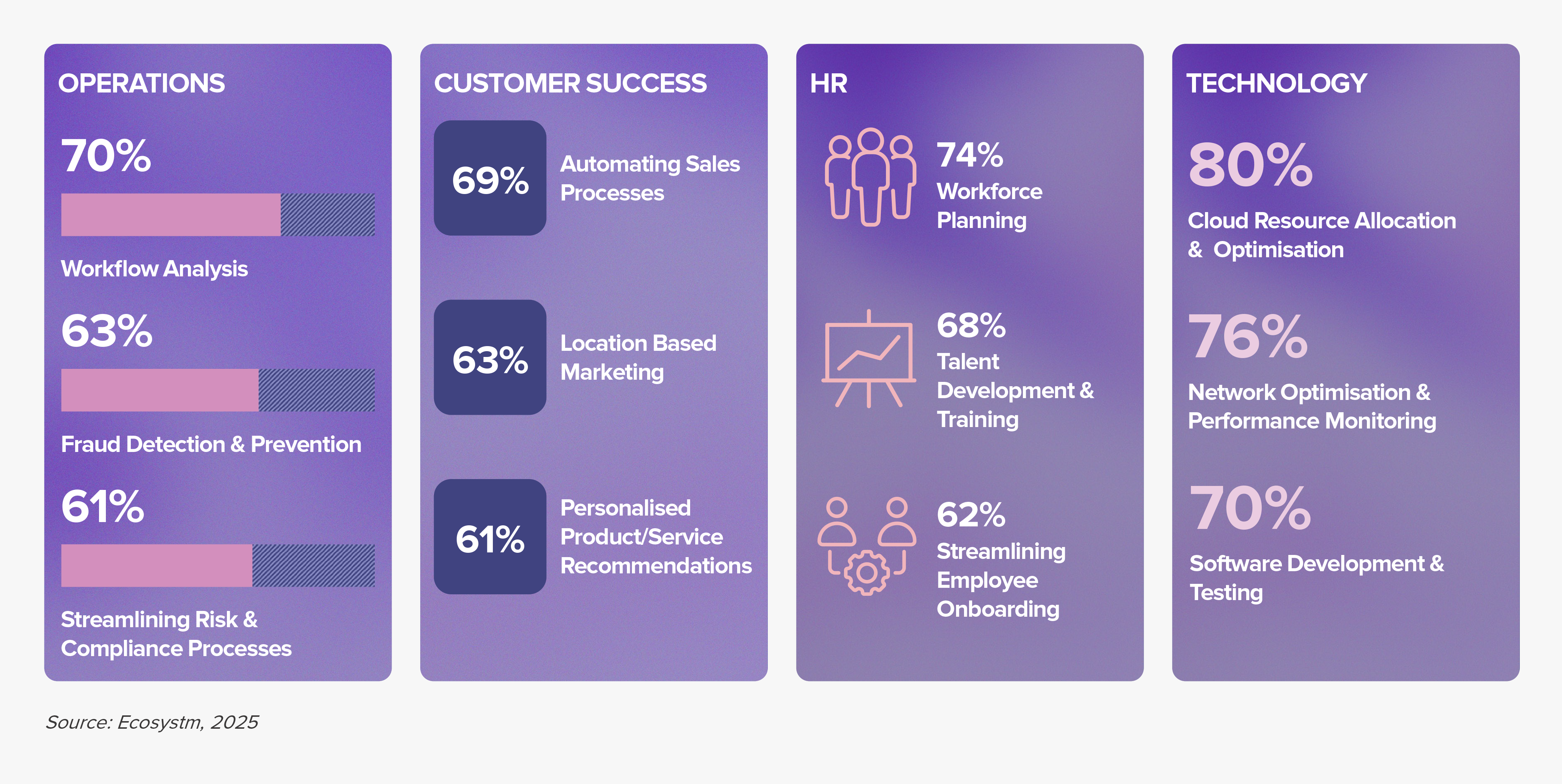
For tech teams, this means delivering robust, scalable AI systems while supporting responsible experimentation by business teams – all in a fast-moving, high-stakes environment.
However, that’s not easy.
• High Costs. AI requires substantial upfront and operational spend. Without measurable outcomes, it’s hard to justify scaling.
• Security & Governance Risks. AI heightens exposure to bias, misuse, and compliance gaps. Most organisations lack mature guardrails to manage this.
• Regulatory Uncertainty. Shifting global policies make it difficult to design AI systems that are both future-proof and compliant.
• Skills Shortage. There’s a growing gap in AI and data expertise. Without the right talent, even promising use cases falter.
• Data Challenges. AI needs vast, high-quality data, but many organisations struggle with silos, poor lineage, and inconsistent standards.
Yet the toughest obstacles aren’t technical.
• Limited AI Fluency at the Top. Many leaders lack a practical understanding of AI’s capabilities and constraints, slowing decisions and making cross-functional alignment difficult.
• No Clear Ownership or Strategy. Without clear ownership, AI efforts remain scattered across IT, innovation, and business teams, leading to fragmentation, misalignment, and stalled progress.
• Unclear ROI and Benefits. AI’s value isn’t always immediate or financial. Without clear metrics for success, it’s hard to prioritise initiatives or secure sustained investment.
• Short-Term Pressure. The push for quick wins and fast ROI often comes at the expense of long-term thinking and foundational investments in AI capabilities.
• Rigid Business Models. AI demands adaptability in processes, structures, and mindsets. But legacy workflows, technical debt, and organisational silos frequently stand in the way.
• Change Management is an Afterthought. Many AI efforts are tech-first, people-later. Without early engagement and capability building, adoption struggles to gain traction.
Bridging the Innovation-AI Gap: The Power of Ecosystems
Bridging this gap between AI ambitions and success requires more than technology; it needs a coordinated ecosystem of vendors, enterprises, startups, investors, and regulators working together to turn innovation into real-world impact.
Public-private partnerships are key. In Singapore, initiatives like IMDA’s Spark and Accreditation programmes tackle this head-on by spotting high-potential startups, rigorously validating solutions, and opening doors to enterprise and government procurement. This approach de-risks adoption and speeds impact.
• For Enterprises. It means quicker access to trusted, local solutions that meet strict performance and compliance standards.
• For Startups. It unlocks scale, credibility, and funding.
• For the Economy. It creates a future-ready digital ecosystem where innovation moves beyond the lab to drive national competitiveness and growth.

Generative AI is seeing enterprise interest and early adoption enhancing efficiency, fostering innovation, and pushing the boundaries of possibility. It has the potential of reshaping industries – and fast!
However, alongside its immense potential, Generative AI also raises concerns. Ethical considerations surrounding data privacy and security come to the forefront, as powerful AI systems handle vast amounts of sensitive information.
Addressing these concerns through responsible AI development and thoughtful regulation will be crucial to harnessing the full transformative power of Generative AI.
Read on to find out the key challenges faced in implementing Generative AI and explore emerging use cases in industries such as Financial Services, Retail, Manufacturing, and Healthcare.
Download ‘Generative AI: Industry Adoption’ as a PDF

Since early 2020 nearly all organisations have strengthened their online presence and commerce abilities – irrespective of their industry. They have come to terms with the fact that the ability to win and retain customers, is largely linked to the digital customer experience (CX) they are able to deliver.
They have invested heavily in their CX roadmaps and technologies; but will find themselves solving for the same challenges they have faced the last 2 years – continued growth of digital experiences; gaining insights from customer data; customer churn; and catering to customer channel preferences.
2022 will be the time to consolidate and build the capabilities required to analyse the immense amount of customer data that they have access to – to finally be able to offer personalised customer experience.
Read on to find out what Ecosystm Advisors Audrey William and Tim Sheedy think will be the leading CX trends in 2022.
Click here to download Ecosystm Predicts: The Top 5 Trends for Customer Experience in 2022 as a PDF

Contact centres were already on a path to modernisation – which got accelerated by the COVID-19 crisis. The need for omnichannel delivery and better insights from customer data has forced contact centres to adopt cloud solutions. Ecosystm Principal Advisor Audrey William says, “There is still a disconnect between integrating and synchronising customer data between Sales, Marketing and Customer Teams. However, the market is starting to see contact centre vendors work closer with vendors in customer experience management segment.”
Genesys and Adobe are collaborating on integrating Genesys cloud and the Adobe Experience Platform. The deeper integration of both platforms is aimed to give organisations a better omnichannel presence. The platform is live for users and Genesys and Adobe will introduce other features and capabilities throughout 2020. Genesys is already a partner of Adobe’s Exchange Program designed for technology partners to supplement Exchange Marketplace with extensions and applications for Adobe Creative Cloud users.
Augmenting the CX journey through Data Synchronization
Ecosystm data finds that 62% of contact centres have driving omnichannel experience as a key customer experience (CX) priority and 57% want to analyse data across multiple data repositories. However, when asked about the challenges of driving consistent CX, data access and integration appears to be a barrier in achieving their priorities. These challenges are the reason why getting a “true view” of the customer data has been an arduous task and achieving consistent CX continues to be a struggle.
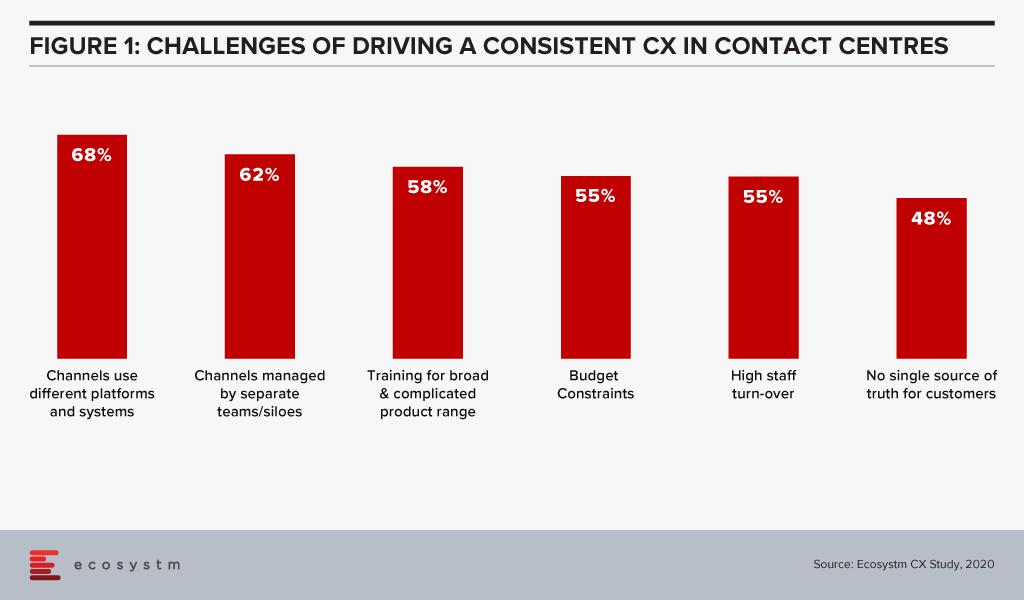
William says. “The customer data collected by a particular service or department does not always move along in real-time with the customer interactions across different touchpoints. This complicates maintaining a real-time customer profile and impacts the CX.”
“Sales and Marketing have different KPIs and tend to view customer data from different angles. The data from in-store, Marketing and Sales interactions sits within departmental silos. They may deal with the same customers and not follow them through their entire journey. This leads to missed opportunities in reaching out to them at the right time with the right products to upsell, resell or provide better CX. Data synchronisation across channels, would solve that problem.”
Integrating Genesys and Adobe Experience Platform will give organisations the capability to provide contact centre agents with real-time customer data and profiles from a single point to provide an personalised experience. The platform is powered by Genesys Predictive Engagement that uses AI to provide more intelligence based on past interactions to drive effective, data-driven conversations. In addition to this, the partnership also enables businesses and marketing departments to customise campaigns and extend their digital and voice capabilities for optimal conversions. William says, “The ability to use AI to understand customer intent, behaviour and patterns is critical as it will allow brands to re-look at how to design the customer journey. When you keep using the same and outdated profile, it will be hard to have discussions around intent, customer interest and assess how customer priorities have changed. Accurate and automate data profiling will lead to more targeted and accurate marketing campaigns.”
Genesys Deepening Industry Partnerships
Genesys is re-shaping its strategy on Contact Centre as a Service (CCaaS) offerings through partnerships and working on its vision of providing Experience as a Service to its global clients. The need for CCaaS has been accelerated by the pandemic. Last month Genesys signed a five year deal with Infosys to develop and deploy cloud CX and contact centre solutions.
Earlier this year, Genesys partnered with MAXIMUS, a US Government services provider to set up the MAXIMUS Genesys Engagement Platform, an integrated, cloud-based omnichannel contact centre solution driven by the government requirement for public sector organisations to provide seamless customer experiences similar to those offered in the private sector.
The company has also partnered with various other industry leaders like Microsoft, Google Cloud, and Zoom to roll out cloud-based innovations to benefit customers.


